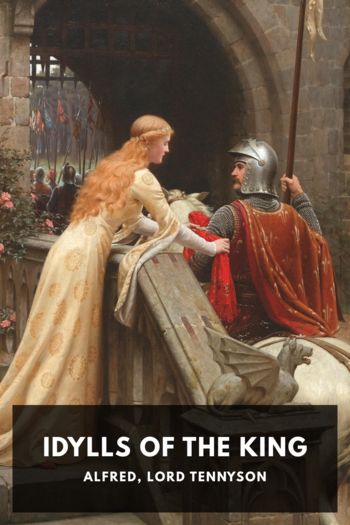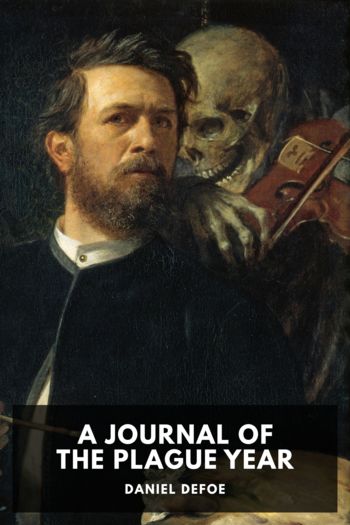Selkirk's Island, Diana Souhami [the best books to read TXT] 📗

- Author: Diana Souhami
Book online «Selkirk's Island, Diana Souhami [the best books to read TXT] 📗». Author Diana Souhami
To spoil The Island as a larder for such men, the Spaniards set loose mastiffs into the valleys. Some goats survived by moving high into the mountain peaks. Most were killed. In a later change of mind, the Spaniards shot the dogs, reintroduced goats, then killed them for their hides.
In 1740 Lord Anson took a naval fleet of English warships to the South Sea. In a voyage of despair men lost their fingers, limbs and lives in freezing gales. Covered in lice ‘a peck on each man’, they endured starvation, dysentery and scurvy. Out of a crew of two thousand, a third survived to The Island. Their joy was great:
it is scarcely credible with what eagerness and transport we viewed the shore, and with how much impatience we longed for the greens and other refreshments which were then in sight, and particularly for the water … Those only who have endured a long series of thirst can judge of the emotion with which we eyed a large cascade of the most transparent water, which poured itself from a rock near a hundred feet high into the sea, at a small distance from the ship…†
The Spaniards did not want the enemy to view The Island with transport and emotion. They built a deterring fort with stone dungeons and armed with soldiers. A kind of village grew: a dozen huts, a few women and children, eighty cows, pigs and sheep. The fort served too as a prison beyond escape.
War with England ended in 1748. The fort fell to disuse, villagers returned to the mainland, the perception of enemy shifted. The Chilean people sought freedom from Spanish colonial rule. Chilean patriots were exiled by the Spaniards to The Island. Consigned to damp caves, they knew nothing of its beneficence.
Castaways, mariners, soldiers, prisoners, hunters, all passed. Waves washed the seals’ blood from The Island’s bays. In 1823 a British traveller, Maria Graham, walked among the ruins of the fort and dungeons, the abandoned huts, the rusting harpoons and cannon by the shore.* She called The Island a ‘magnificent wilderness’ and was ‘enraptured with the wild beauty of the scenery’. Three herdsmen tending cattle were the only people there. She saw a discarded horse, neglected fields, charred wood from an old fire. She rested among myrtle trees, the mountains rose around her, she felt a shadow of the ‘utter loneliness’ Selkirk must have known.
A recurring theme of visitors was how The Island might be colonised. A Swiss émigré, Alfred de Rodt, in 1877 put his plans to the Chilean authorities. He would transport sixty people and a thousand cattle to The Island, produce charcoal and export the native palms. He would farm and fish, trap lobsters, kill whales and what were left of the seals.
He was appointed Inspector of Colonisation. Families came from Spain, France, Germany and Switzerland. Their names were Gonzalez, Chamorro, Charpentier, Camacho, Recabarren, Lopez, Schiller. Like other unendangered species they multiplied. When de Rodt died in 1905 The Island had a settlement of 122 human inhabitants. They viewed The Island as theirs.
2000 Isla Robinson Crusoe
THE ISLAND is now in Chilean territory. De Rodt’s colony has grown, but only to 500 people. Their settlement is called San Juan Bautista (St John the Baptist). Wooden huts and houses straddle the Great Bay where Selkirk scavenged alone.
The islanders keep Selkirk’s memory. In 1966 Blanca Luz Brum, painter, and owner of the Hostelria Daniel Defoe, a cluster of shacks by the shore, petitioned the Chilean authorities to change The Island’s name from Mas A Tiera to Isla Robinson Crusoe. She had the tourist trade in mind. The other island in the archipelago, Mas A Fuera, was renamed Isla Alexander Selkirk, though he never set foot on that unaccommodating rock, which was a danger to avoid.
On Isla Robinson Crusoe, in the huts that pass as shops, Crusoe t-shirts and Selkirk wall hangings are sold. A wooden sign directs travellers up a mountain trail to the Mirador Del Selkirk, the lonely peak where he searched for a sail.* The cave by the projecting rock in the north-west bay at Puerto Inglés, where he never stayed, is known as Selkirk’s cave.
The Island’s savage terrain and the wide encircling sea, deter Homo sapiens. It is possible to link to the World Wide Web, though phone lines are often down. An electricity generator works, on and off. There are one or two cars, no road, newspapers, postman or bank. Credit cards and cheques are not used, or taxes collected. There is a doctor, a dentist, a midwife, but no pharmacy, hospital or vet. Six uniformed carabinieros play soccer and collect little children from school on rainy days. Older children go to boarding school in Valparaiso, ferried over in a naval ship in March, then back to The Island in summer for Christmas.
The islanders have a few civic rules. The Municipality, created in 1980, levies rates for water piped from the mountain streams and for maintenance of the pier – on the opposite side of the bay from where Selkirk urged his rescuers to land. A notice in the Correos, the post office, by Order of the Municipality, strictly forbids the tethering of animals to the football goalposts. Those who disobey are threatened with a fine.
Islanders refer to mainland Chile as ‘the continent’. It seems a world away. In turbulent weather marooned visitors watch the sky. If clear, a small plane flies (courtesy of ‘Robinson Crusoe Airlines’) to a domestic airport in Chile’s capital city, Santiago.* It carries a few people, post, and in season, boxes of lobsters. Its runway is a dirt strip at El Puente (the bridge), the only flat bit on The Island, at the low western end where Selkirk went by boat with Dampier to snare goats. Travellers take the same bucketing boat trip from the Great Bay to Bahia del Padre, past awesome cliffs, and rocks





Comments (0)